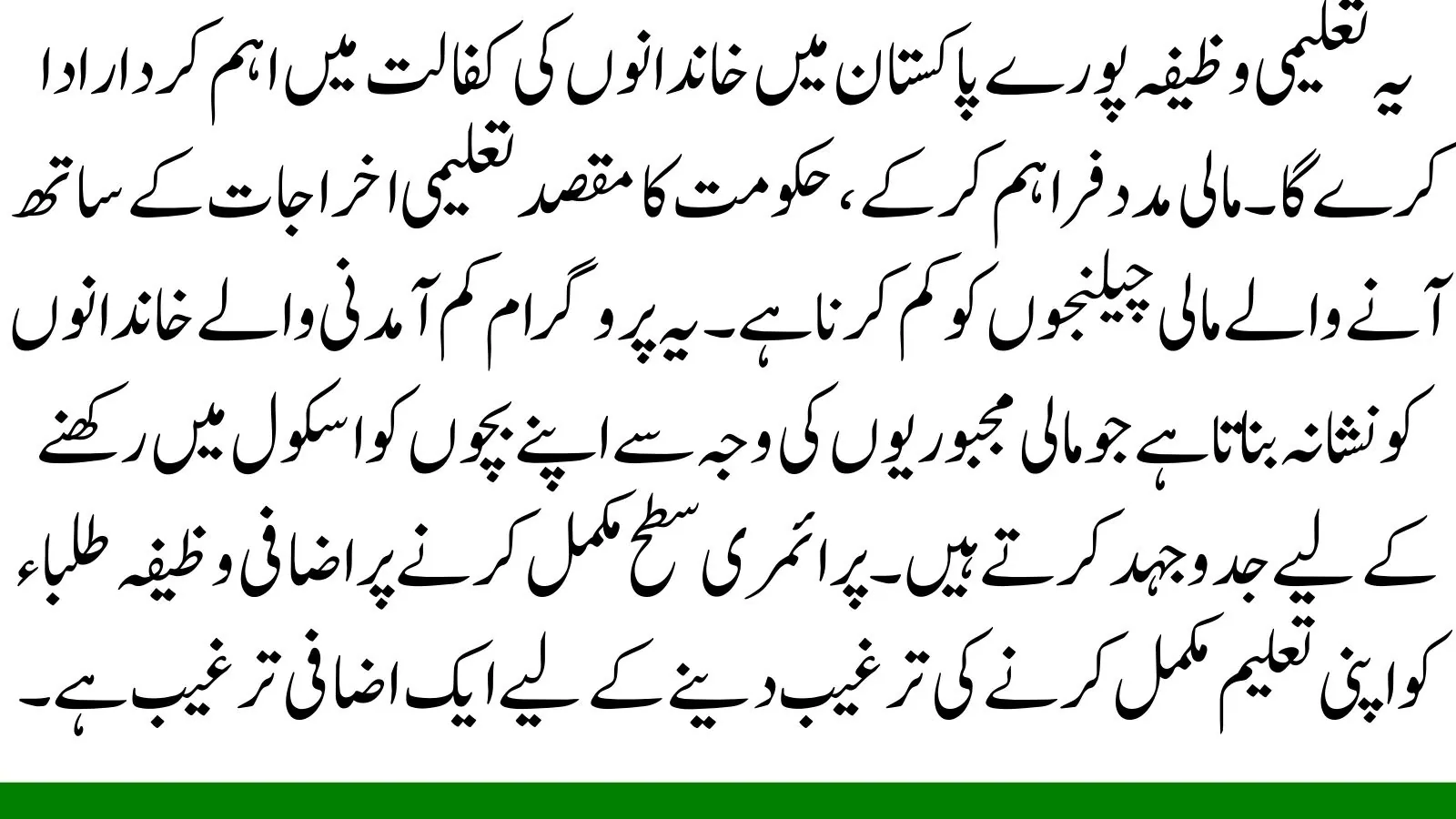The Benazir Taleemi Wazaif program, also known as the Benazir Educational Stipend, has been increased to support over 6 million students across Pakistan. The new stipends will start in January 2025, and the payments will be made to mothers of children from nursery to Grade 12. This step aims to encourage education and help parents support their children in school. Below is a short table summarizing the stipend amounts for different education levels:
| Education Level | Stipend Amount |
| Primary Level | Rs 2,000 |
| Secondary Level | Rs 3,000 |
| Higher Secondary Level | Rs 3,500 |
| Completion of Primary | Extra Rs 3,000 |
Contents
Who Can Apply for the Stipend?
To qualify for this financial support, the child’s mother must be registered with the Benazir Income Support Program (BISP). Children aged between 4 and 12 years can apply for the primary level, while the age range for secondary education is from 8 to 18 years. For higher secondary education, students must be between 13 and 22 years old. This program is designed to ease the financial burden on parents and motivate students to continue their education without financial worry.
Important Benefits of the Program
The Benazir Taleemi Wazaif program offers several key benefits to families. These benefits are aimed at ensuring children stay in school and complete their education:
- Encourages parents to send their children to school.
- Provides extra support to families in need.
- Helps reduce the dropout rate by giving financial assistance.
- Rewards students who complete the primary level with an additional stipend.
Application Process and Distribution
The application process for the Benazir Taleemi Wazaif program is straightforward. Parents, especially mothers, must first register with BISP. Once registered, they can receive the stipend directly. The funds will be distributed regularly to ensure that students from underprivileged families continue their education without any obstacles. The government has made it a priority to ensure the timely disbursement of stipends so that every eligible family benefits from this program.
How Will This Help Families?
This educational stipend will play a critical role in supporting families across Pakistan. By providing financial help, the government aims to reduce the financial challenges that come with education costs. The program targets low-income families who struggle to keep their children in school due to financial constraints. The extra stipend upon completing the primary level is an added incentive to motivate students to finish their education.

Stipend Breakdown for Different Levels
The stipend amounts vary depending on the student’s education level. Primary school students will receive Rs 2,000, while secondary school students will receive Rs 3,000. For higher secondary students, the stipend is set at Rs 3,500. Additionally, students who successfully complete the primary level will receive an extra Rs 3,000. This financial support is crucial in keeping students on the path to success and helping them pursue their academic goals.
Conclusion
The increase in the Benazir Taleemi Wazaif stipends is a positive step towards supporting education in Pakistan. This initiative will help millions of students continue their education and reduce the financial burden on their families. By offering financial assistance at different levels, the program aims to ensure that every child has the opportunity to attend school and complete their studies. It reflects the government’s commitment to improving education and supporting families across the country.
Also Read: BISP and NSU Collaboration for Skills Training: Check Eligibility
FAQs
How can mothers register for the stipend?
Mothers must register with the Benazir Income Support Program (BISP) to qualify for the stipend.
What is the extra benefit for completing primary school?
Students who complete the primary level will receive an additional Rs 3,000 as a reward.
What are the age requirements for different education levels?
For primary education, children must be aged 4-12 years, for secondary education 8-18 years, and for higher secondary education 13-22 years.

